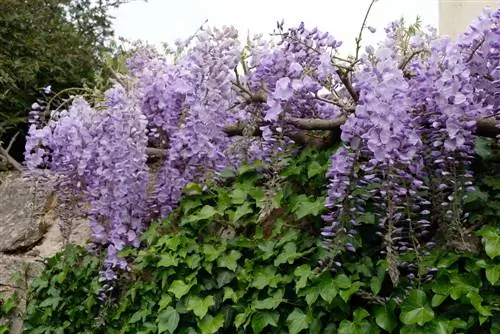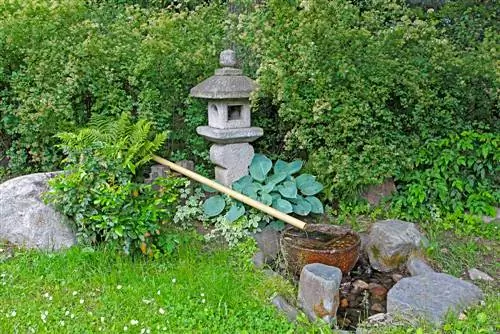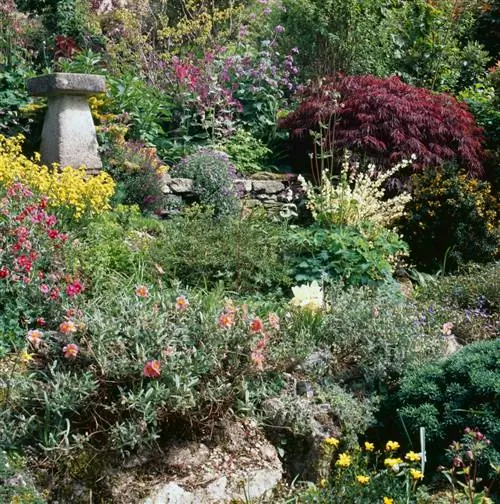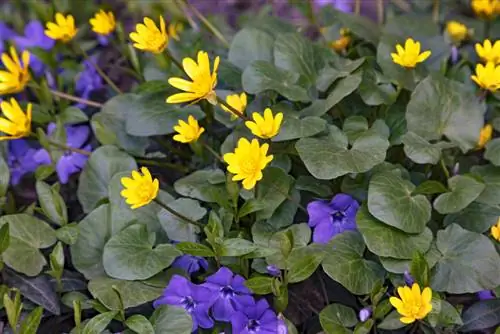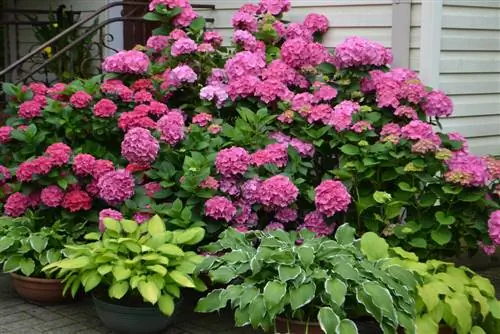- Author admin [email protected].
- Public 2023-12-16 16:46.
- Last modified 2025-01-23 11:22.
When the wisteria is decorated with its lush floral robe, observers are often at a loss for words because of their excitement. But although the wisteria already looks fantastic as a solitary plant, it is worth combining it with other plants.
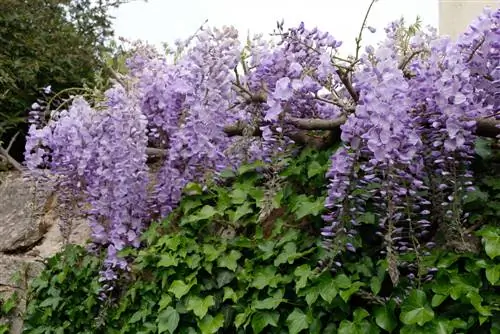
Which plants go well with wisteria?
When combining wisteria, climbing plants such as morning glory, nasturtium, sweet pea, snapdragon, wild vine, ivy and laburnum are suitable. Steppe candles, ornamental onions, hostas, irises or columbines fit in the bucket. Flower color, flowering time and location requirements are important factors.
What factors should you consider when combining wisteria?
For a successful combination with wisteria, you should take the following factors into account when choosing companion plants:
- Flower color: blue-violet, pink or white
- Flowering time: April to June
- Location requirements: sunny, nutrient-rich and well-drained soil
- Growth height: up to 12 m
Due to its climbing habit, with which it can reach a height of up to 12 m (in exceptional cases up to 30 m), the wisteria should be combined with plants that also like to climb to dizzying heights.
When combining it with other flowering plants, pay attention to the blooming time of the wisteria if you want to admire the flowers of both plants at the same time. Alternatively, you can also choose partners that bloom at a different time to wisteria.
As a true sun worshiper and heat lover, the wisteria should have neighbors who also feel comfortable in the sun.
Combine wisteria on the trellis or facade
As a climbing plant, wisteria is best expressed on trellises and house facades. Therefore, combinations with other climbing plants are worthwhile. It is advisable to choose climbing plants that are annuals. They should not displace the wisteria with their growth, but rather gently ensnare it and subordinate it.
The following plants are perfect for a combination with wisteria:
- Morning glory
- Nasturtium
- sweet pea
- climbing snapdragon
- Wild Wine
- Ivy
- Gold Rain
Combine wisteria with ivy
The ivy adapts easily to the location of the wisteria. It produces beautiful foliage all year round and is therefore a welcome balance to the summer green wisteria. Since both plants grow quite vigorously, you should maintain a minimum distance of 5 m on a facade or a trellis (€17.00 on Amazon).

Combine wisteria with morning glory
The annual morning glory can easily climb up the wisteria without it feeling pressured by it. It replaces it in its flowering from July, making this combination particularly valuable. In addition, the morning glory tolerates the same location as the wisteria.
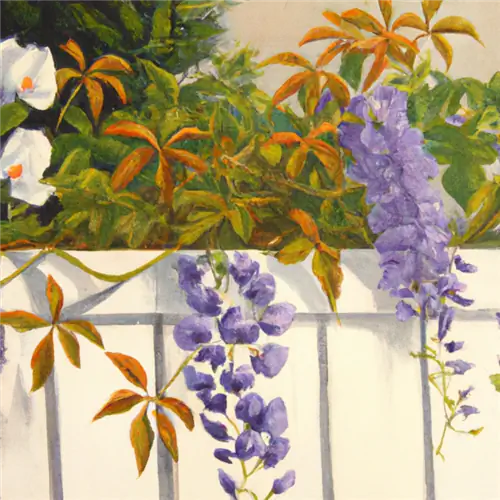
Combine wisteria in the bucket
When grown as a stem, the wisteria fits nicely into pots. Smaller perennials, which adorn the trunk area and harmonize with its appearance with their shape and color, are particularly suitable for it.
- Steppe candles
- ornamental onion
- Funkia
- Iris
- Aquilegia
Combine wisteria with steppe candles
The steppe candles like it sunny and warm and are therefore suitable plant partners for the wisteria in the pot. If you raise your flower candles in early summer and the wisteria is in full bloom, an almost magical interaction can arise. Underplant blue-violet wisteria with yellow, orange or white steppe candles.
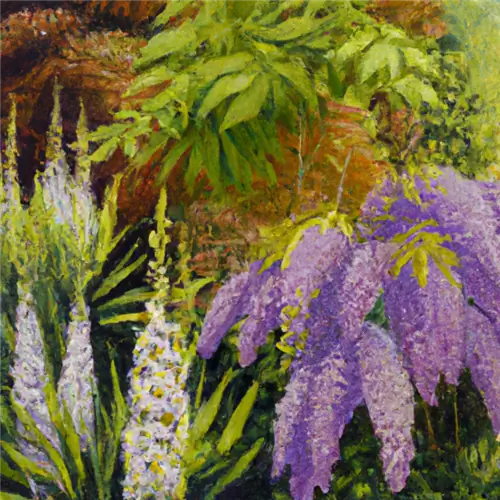
Combine wisteria with laburnum
You can combine wisteria wonderfully with laburnum. This interaction creates a fascinating color spectacle: the yellow flowers of the laburnum are in complementary contrast to the violet flowers of the wisteria. Place both plants in separate pots.

